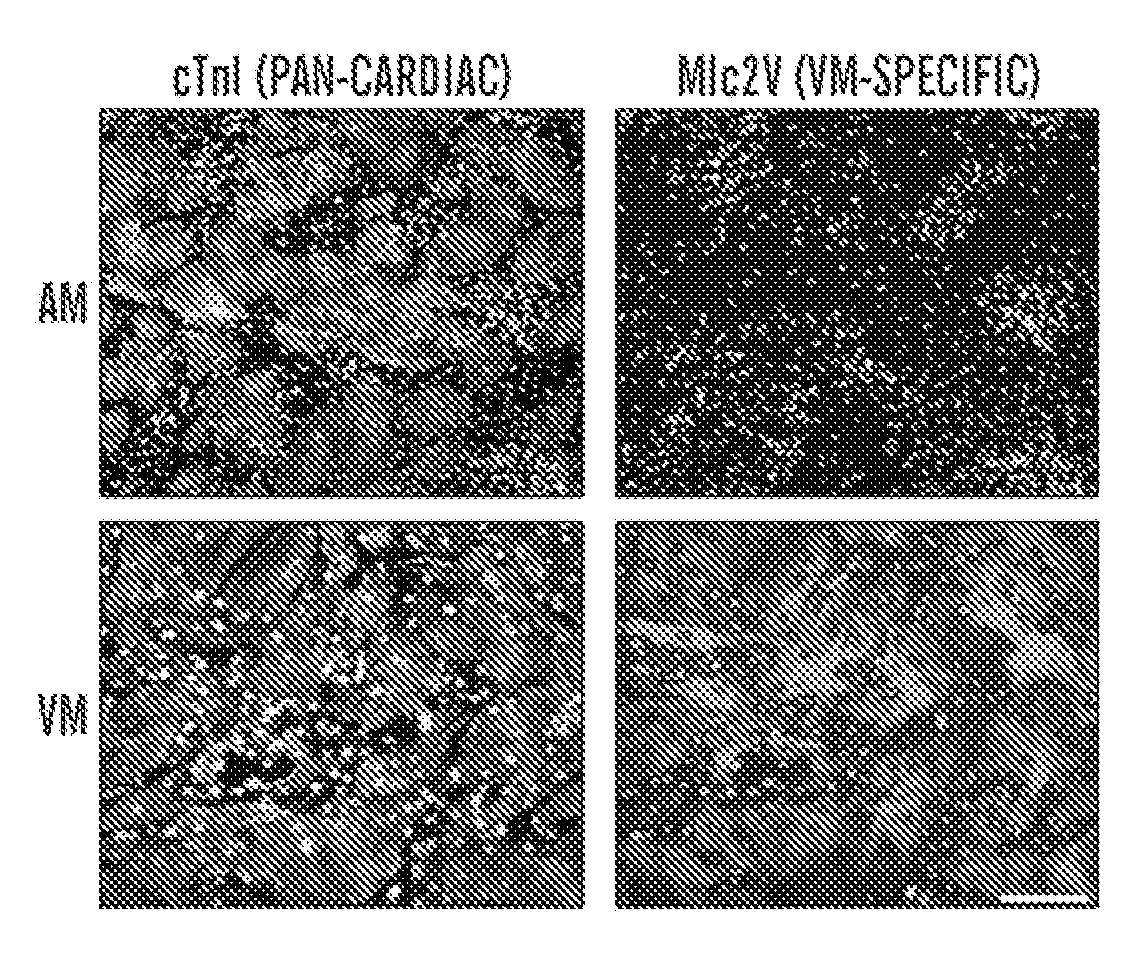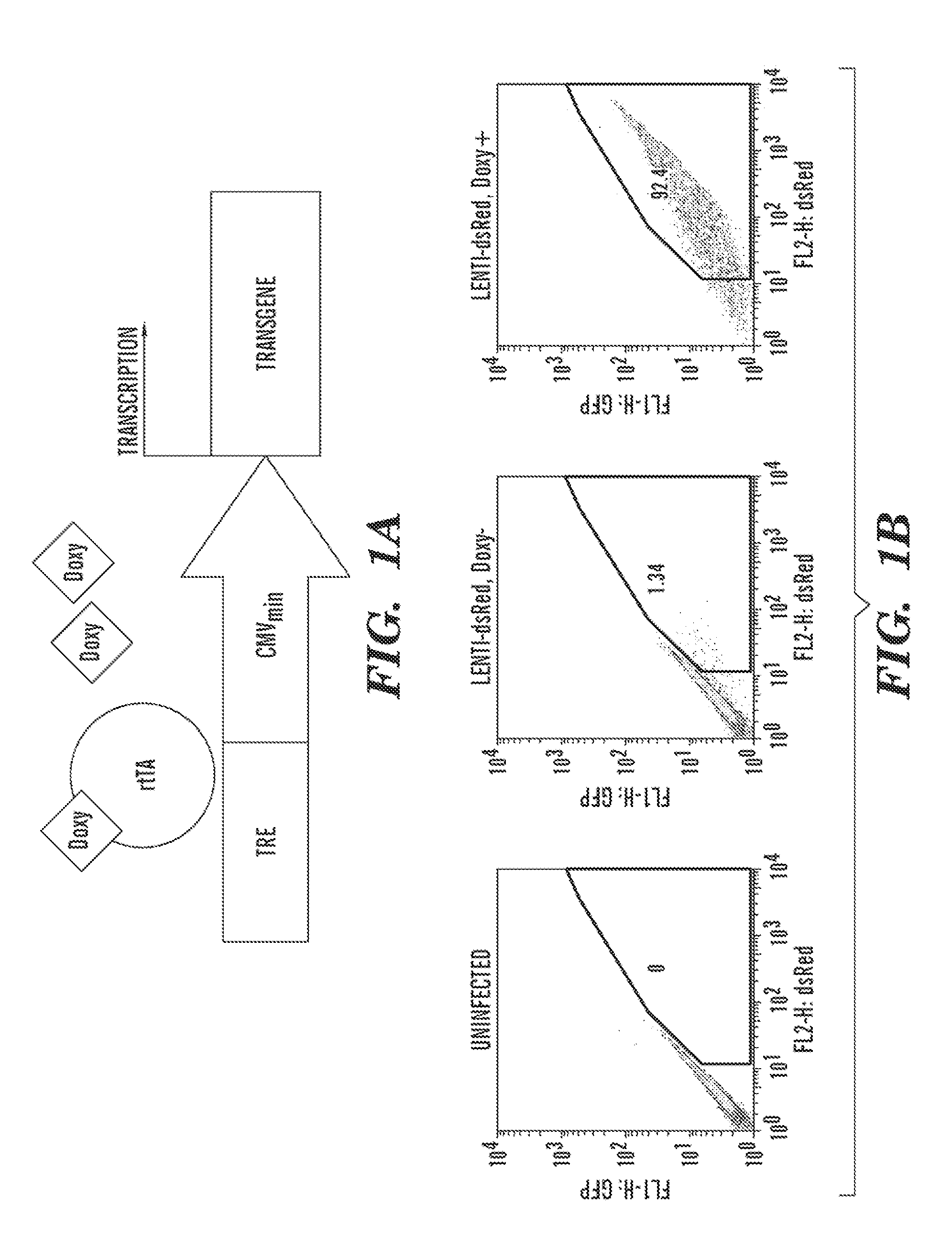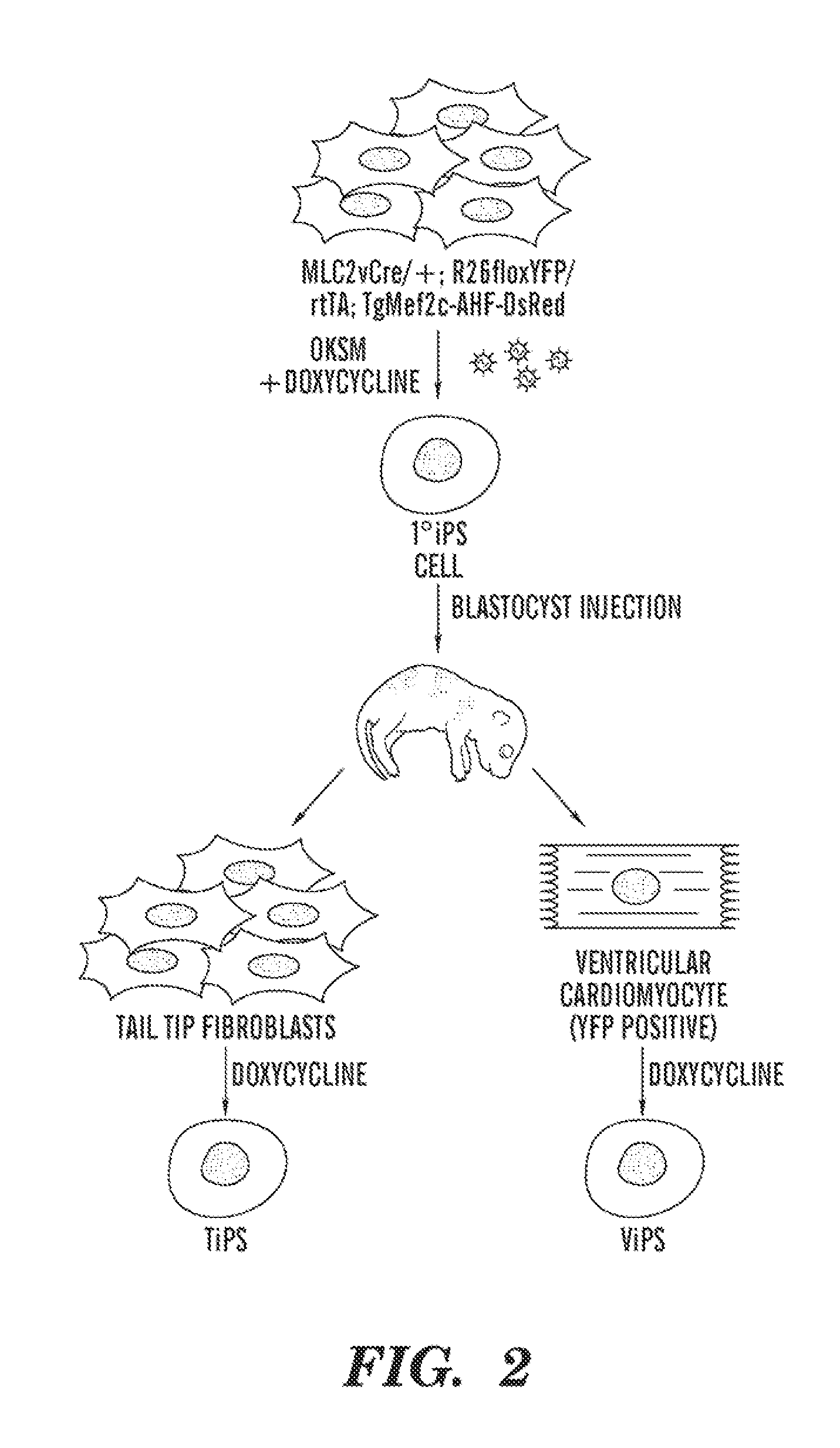VENTRICULAR INDUCED PLURIPOTENT STEM (ViPS) CELLS FOR GENERATION OF AUTOLOGOUS VENTRICULAR CARDIOMYOCYTES AND USES THEREOF
a technology of autologous ventricular cardiomyocytes and ventricular induced pluripotent stem cells, which is applied in the field of tissue, organ and cell transplantation, can solve the problems of lack of long-term benefits, failure to achieve cardiac cell regeneration, and high demand for transplantation, so as to achieve more cardiomyogenic potential, increase the yield of cardiomyocytes, and improve the effect of cardiomyogenic potential
- Summary
- Abstract
- Description
- Claims
- Application Information
AI Technical Summary
Benefits of technology
Problems solved by technology
Method used
Image
Examples
example 1
[0342]Each of the chambers of the mammalian heart is composed of a specific population of cardiomyocytes that arise largely from the first and second heart fields (1). After a myocardial infarction, it is estimated that approximately a billion cardiomyocytes are lost (2); thus, one of the major hurdles for cardiac regenerative medicine will be generating sufficient numbers of cardiomyocytes necessary for effective cell replacement therapy (3). Ventricular myocytes, in particular, have distinct functional and electrophysiological properties that are optimized for efficient contractile function and electrical stability (4); therefore, it would be desirable to derive a homogenous population of ventricular myocytes since cardiomyocytes with varying functional and electrical properties in the wrong cardiac environment may be ineffective, counterproductive, or potentiate adverse cardiac arrhythmias (3, 5). A critical discovery has been the identification and purification of committed vent...
example 2
Evaluation of the Cardiomyogenic Potential of ViPS Cells in Comparison to TiPS and ES Cells
[0354]Three ViPS and TiPS cell lines, in parallel with three ES cell lines, were differentiated through embryoid body (EB) formation. All the three ViPS cell lines, and two of the three TiPS cell lines can contribute to chimeras after blastocyst injection. While the EBs from ES and TiPS cells did not start beating until day 8, about 20% of the EBs from ViPS cells were beating as early as day 6, and on day 7, about 80% EBs from two of the three ViPS cell lines were beating. To score cardiomyogenesis quantitatively, the inventors used intracellular fluorescence activated cell sorting (FACS) with the antibody against cardiac Troponin T (cTnT). On day 7, there were very few cTnT+ cardiomyocytes in the EBs from ES or TiPS cells (0.13% and 0.096%, respectively). In contrast, 5.22% of the cells in the EBs from ViPS cells were cTnT+ at this stage (FIG. 7A). On day 12, when the number of cTnT+ cardiomy...
example 3
The Majority of Cardiomyocytes from ViPS are of a Ventricular Identity
[0355]The inventors also performed real-time PCR to examine the expression of cTnT and Mlc2v, which are pan-cardiac and ventricular specific markers respectively, in the whole EBs on day 7. While the expression of cTnT in ViPS EBs was about 8-fold of that in ES cells, the expression of Mlc2v in ViPS EBs is about 52-fold (FIG. 7D). The preferentially higher expression of the ventricular specific marker over the pan-cardiac marker in ViPS cell EBs than ES cell EBs is consistent with a higher portion of ventricular myocytes among the cardiomyocytes from ViPS cells.
[0356]The inventors also demonstrated by immunocytofluorescence with antibodies against Mlc2v [ventricular marker] and Sarcolipin or ANF [atrial markers] together with that against cTnT [pan-cardiac marker]; that the ViPS cells are of a ventricular identity (data not shown).
[0357]The inventors have demonstrated that there is a higher expression of some card...
PUM
| Property | Measurement | Unit |
|---|---|---|
| Force | aaaaa | aaaaa |
| Efficiency | aaaaa | aaaaa |
| Frequency | aaaaa | aaaaa |
Abstract
Description
Claims
Application Information
 Login to View More
Login to View More - R&D
- Intellectual Property
- Life Sciences
- Materials
- Tech Scout
- Unparalleled Data Quality
- Higher Quality Content
- 60% Fewer Hallucinations
Browse by: Latest US Patents, China's latest patents, Technical Efficacy Thesaurus, Application Domain, Technology Topic, Popular Technical Reports.
© 2025 PatSnap. All rights reserved.Legal|Privacy policy|Modern Slavery Act Transparency Statement|Sitemap|About US| Contact US: help@patsnap.com



